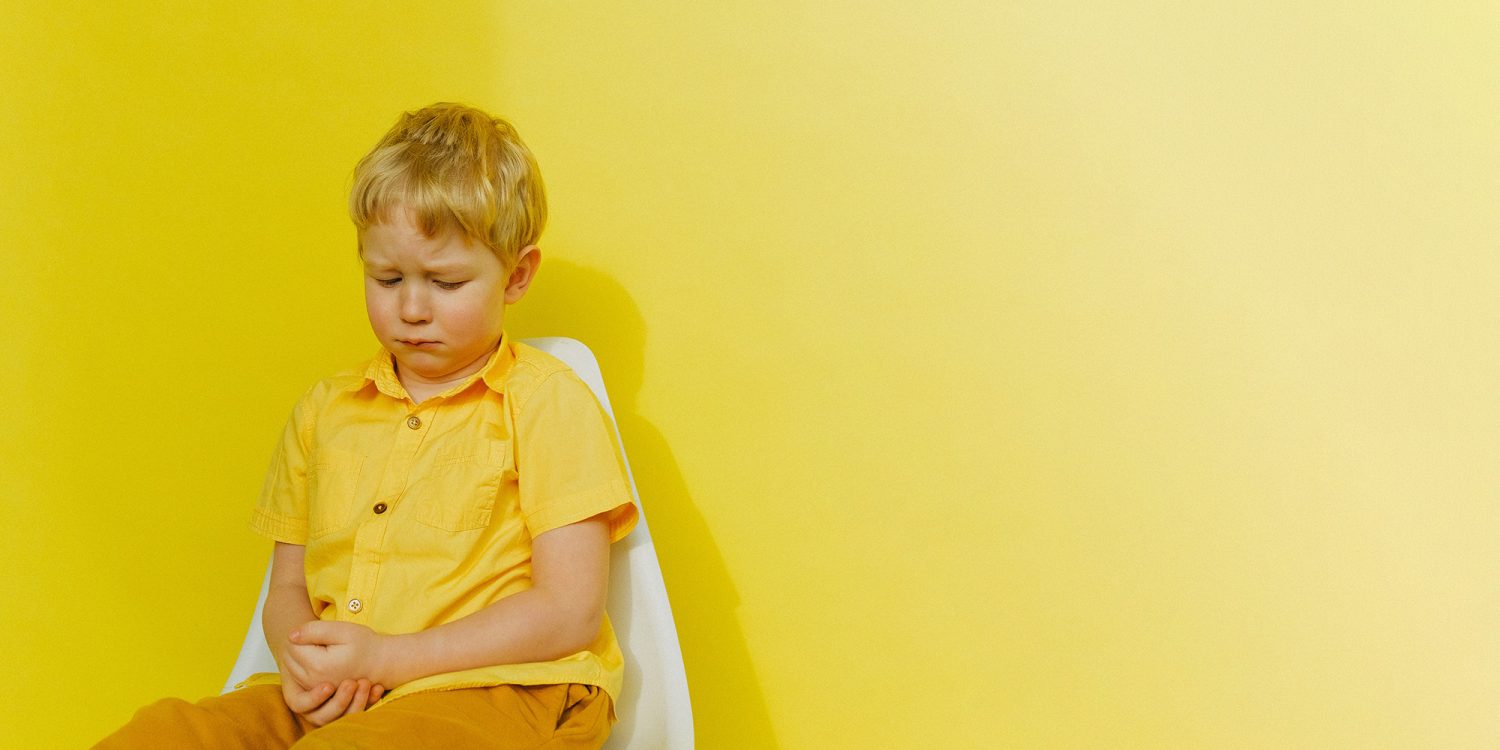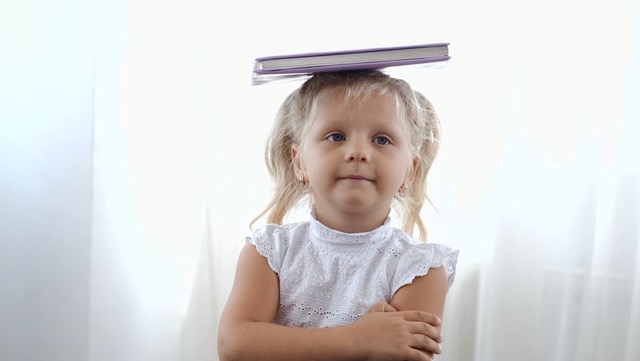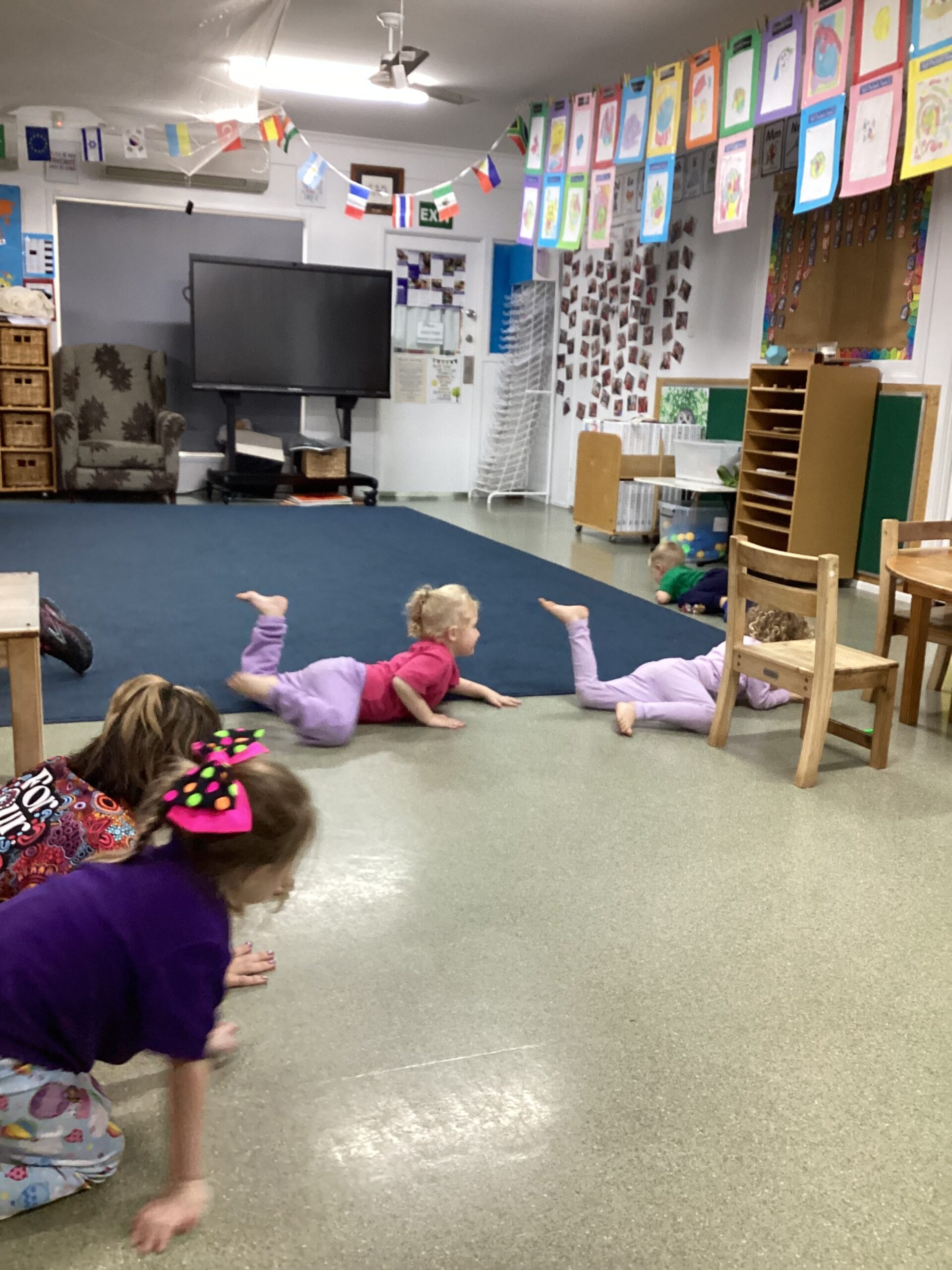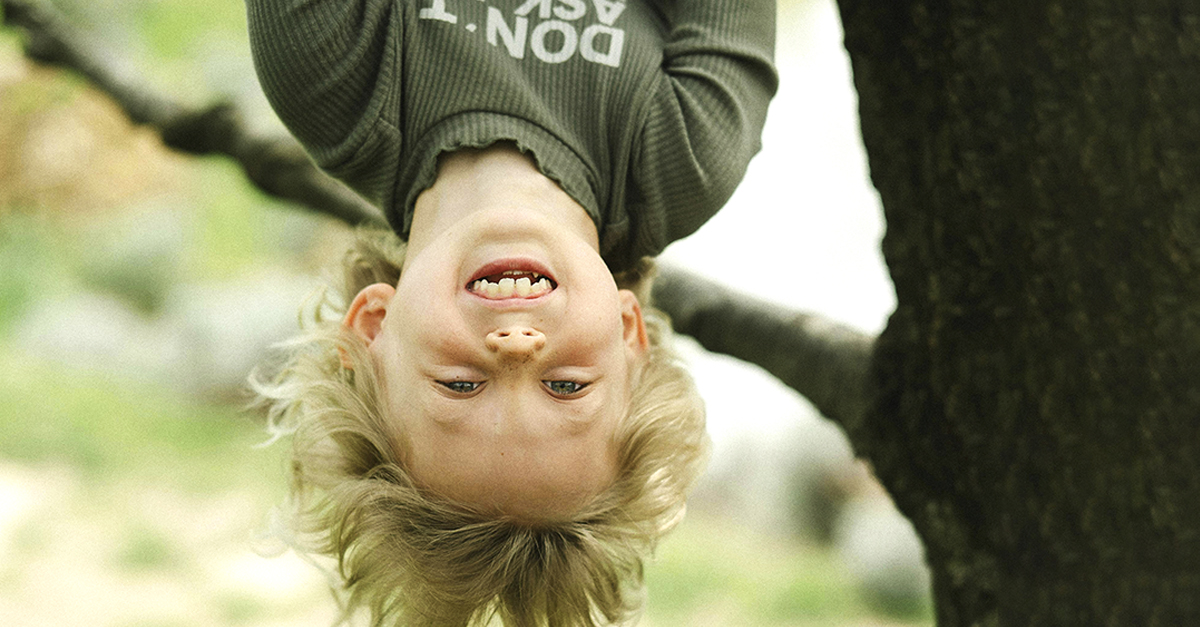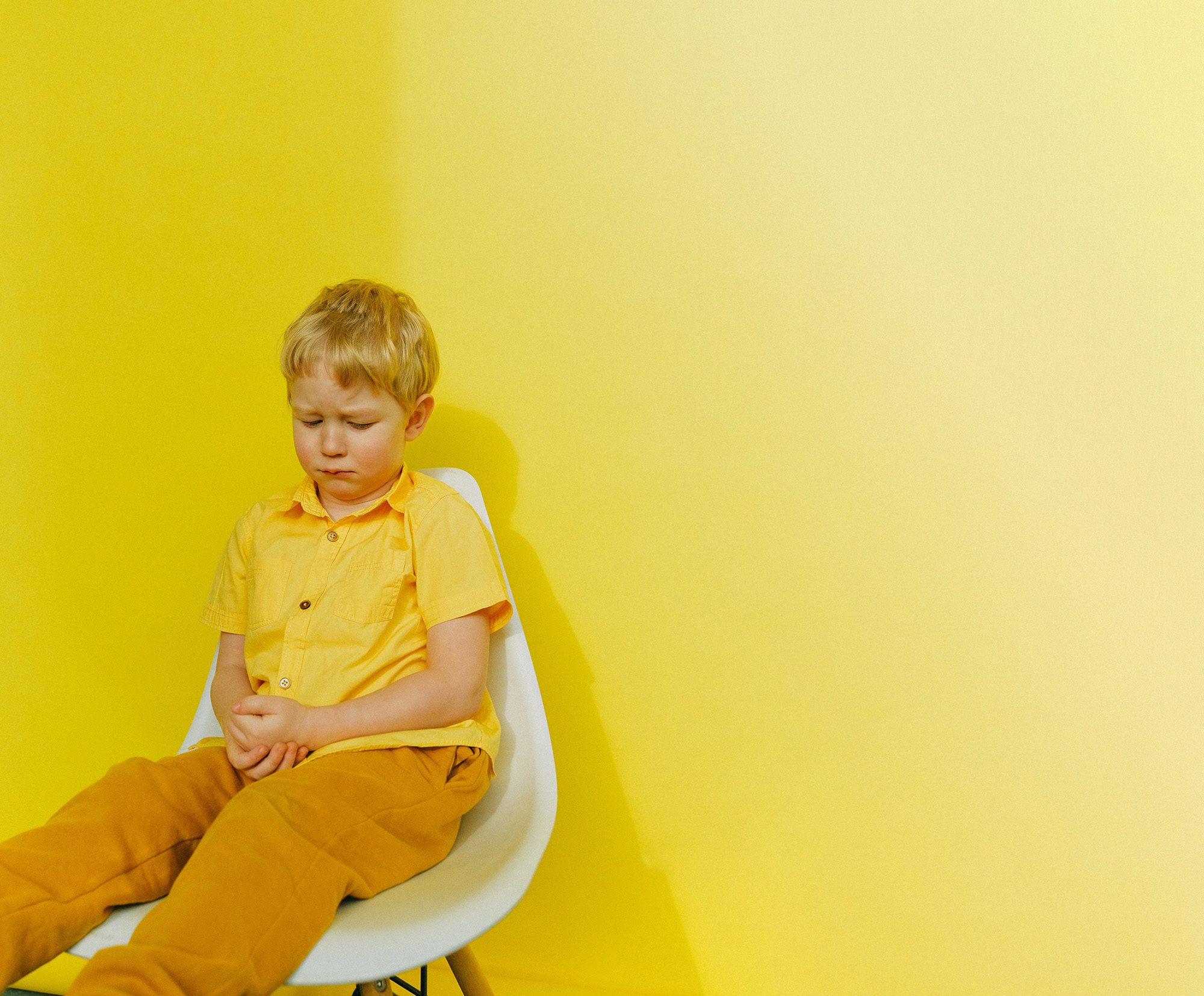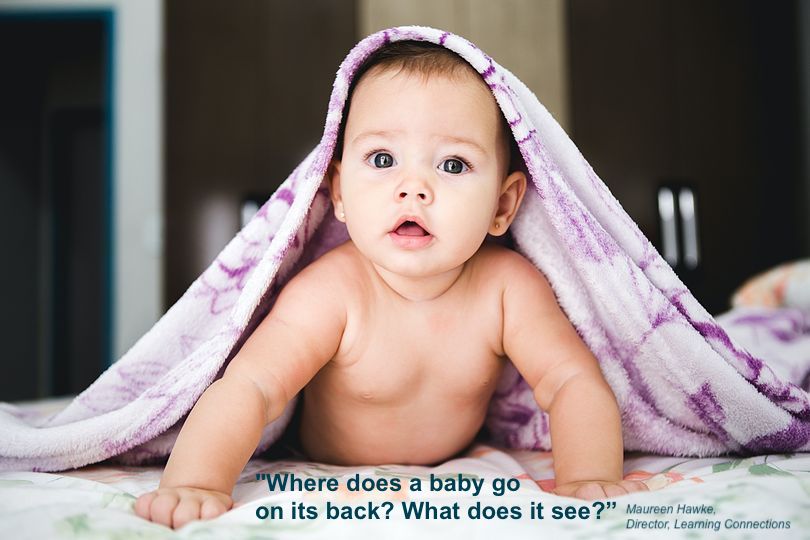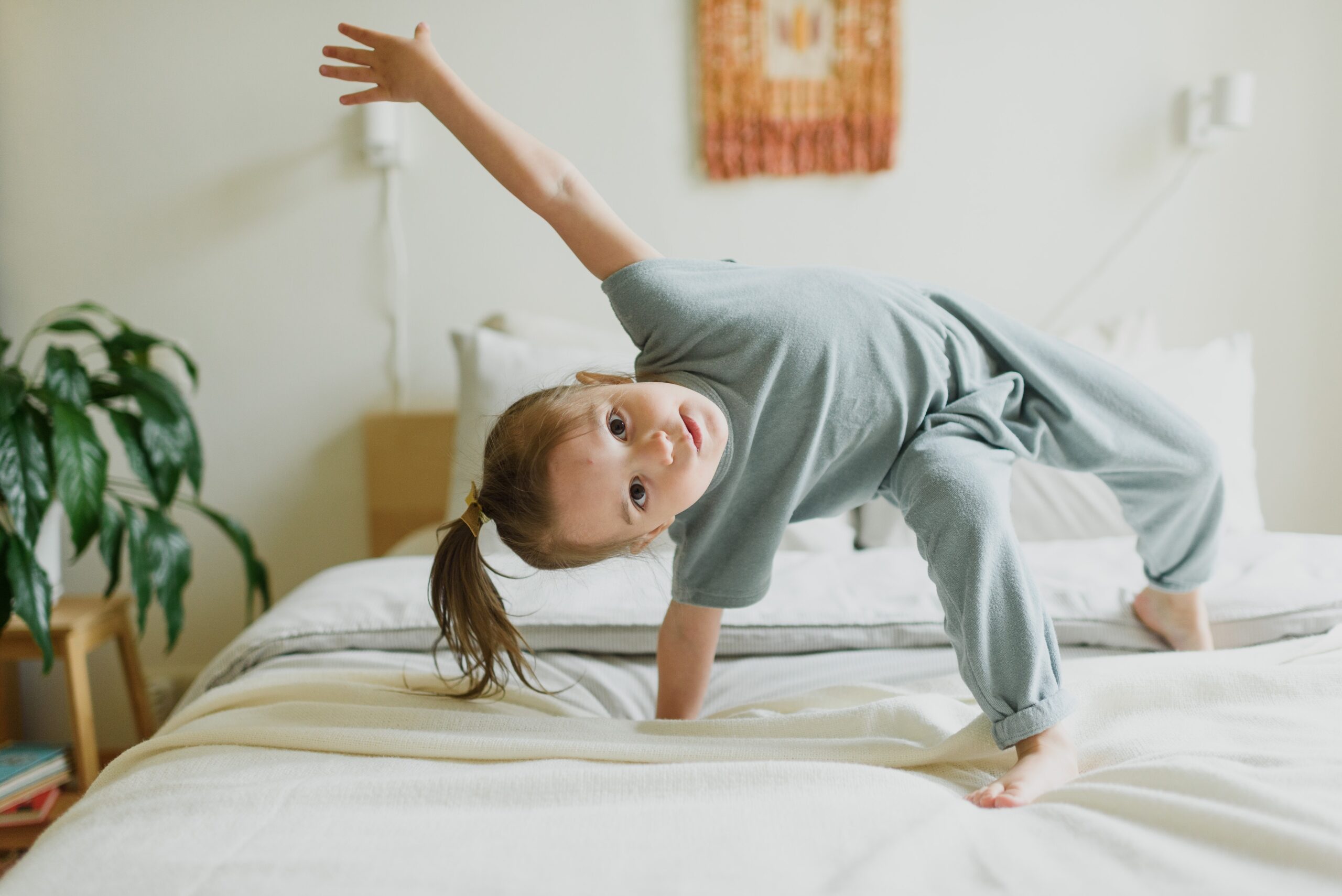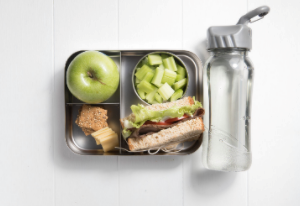Brain regions responsible for motor control interact with regions involved in self-regulation – movement programs therefore provide strong support for the development of self-regulation skills.
What is self-regulation?
Self-regulation is our ability to control our thoughts, emotions and behaviours in response to the demands of the environment. It’s the ability to return to a balanced, calm and constant state of being. (1)
Developing self-regulation skills is a critical part of a child’s overall cognitive, emotional, and social development. It includes both top-down (i.e. the executive functions of attentional flexibility, working memory, and inhibitory control) and bottom-up (more automated emotional and stress responses associated with the limbic and brainstem areas of the brain) regulation of thoughts, feelings, and behaviour. (2)
Self-Regulation and School-Readiness
Self-regulation skills provide the foundation for school-readiness, enabling the child to adapt to the school social environment and engage in learning activities.
The importance of self-regulation for school-readiness is highlighted in a study asking kindergarten teachers to rank the skills and abilities most relevant to school-readiness. Very few teachers responded with academic concepts of readiness such as being able to count to 20, know the letters of the alphabet, know colours and shapes, or to be able to use a pencil or paintbrush. Rather, their concept of school-readiness was summarised as :
… being physically well nourished and rested, able to communicate wants and needs verbally, to be enthusiastic and curious in approaching new activities, to pay attention and follow directions, to not be disruptive and to be sensitive to other children’s feelings. (3)
Children who are better at self-regulation will tend to have better academic outcomes, social skills, and mental health. The importance of self-regulation is recognised in the Early Years Learning Framework.
The challenge for parents and early years educators is reflected in the statistics, with an estimated 30% of Australian children entering school with poor self-regulation skills. (4,5) These skills can however be improved with appropriate interventions and supportive environments.
Factors impacting on the development of self-regulation skills
Children aren’t born with self-regulation skills, they are born with the potential to develop them. (6) The development of self-regulation skills is a complex and ongoing process that begins in early childhood and continues throughout life.
As a child grows from a toddler to a pre-schooler they are typically using more advanced self-regulation skills such as impulse control and emotional regulation – they are more able to control attention and resist distraction; they can engage in a wider range of cognitive activities such as planning and carrying out a complex task and will have more advanced problem-solving strategies. They are also developing stronger social skills and becoming more aware of others’ emotions and perspectives. (7)
The progress of any individual child will however be impacted by a range of factors relating to the child and their environment and the interplay between the two. (8) A child’s inherent temperament, genetic predispositions, physical health, and brain development significantly influence self-regulation. Some children, due to their biological makeup, may naturally be more active, impulsive, or emotionally reactive than others, thus requiring different levels of self-regulation.
Environmental factors, including the quality of caregiving, family dynamics, socio-economic status, and cultural context play a crucial role. For example, a child raised in a supportive, responsive environment tends to develop better self-regulation skills than a child exposed to chronic stress or neglect.
Parenting practices and parent-child interactions are critical environmental factors. Parents who consistently provide structure, express warmth and respond effectively to their child’s needs help develop self-regulation skills. In contrast, inconsistent or harsh parenting can undermine self-regulation development.
Moreover, parents can support their child’s biological needs (like adequate nutrition, sleep, and physical activity), further promoting self-regulation. An example of the interaction of the child and the environment is the influence of a child’s sleep patterns (a biological factor) on their self-regulation. Adequate sleep is essential for children’s brain function, including areas related to self-regulation. However, sleep patterns can be significantly impacted by environmental factors such as family routines and parental behaviours. Consistent bedtime routines can promote better sleep quality and duration, thus supporting the biological needs of the child and, in turn, enhancing self-regulation skills. Parents and educators can establish environments that are conducive to learning self-regulation skills – this can include:
- Providing clear expectations and consistent boundaries, while also being responsive to the child’s needs
- Modelling appropriate self-regulation skills such as showing patience, staying calm in stressful situations, and demonstrating problem-solving strategies
- Being consistently responsive to the child’s needs and demonstrating emotional availability
- Encouraging and rewarding self-regulation when it occurs can motivate children to continue practicing these skills
- Promoting autonomy by providing children with opportunities to make choices and decisions and encouraging them to solve problems independently.
The benefit of movement programs
There’s a link between the development of motor skills and self-regulation. Brain regions responsible for motor control, such as the cerebellum, also interact with regions involved in executive function and self-regulation, such as the prefrontal cortex. Exercising motor control can therefore stimulate these brain regions, promoting self-regulation. (9) Aerobic exercise is found to increase the production of the protein brain-derived neurotrophic factor (BDNF) which is associated with better executive functioning. (10)
Adding a “cognitive load”
Whilst all physical activity will benefit children, physical activities with a “cognitive load” will have a stronger effect on executive function and self-regulation than simpler repetitive exercises such as running and jumping because they require the active participation of higher-order brain functions. (11)
Some examples of cognitively loaded physical activities are:
- Team sports, such as soccer and basketball, that require cooperation with teammates, anticipating behaviour, employing strategies and adapting to ever-changing task demands.
- Traditional martial arts
- Obstacle course with rules: Obstacle courses that not only requires physical skills but also includes rules that require cognitive engagement (e.g., “skip over the blue obstacles but crawl under the red ones”)
- Running Memory Game: Set up different stations with a specific action or item to remember. Children run from one station to another and at the end, they need to recall what was at each station.
- Dance Sequences: Teach the children a sequence of dance steps which they have to remember and perform. This could be made more challenging by progressively adding more steps to the sequence. (12)
Neurodevelopmental movement programs and crossing the midline
Additional benefits for the development of executive function and self-regulation in children occur through neurodevelopmental movement programs.
Neurodevelopmental movement programs that include exercises crossing the midline, like the Learning Connections Early Years Program, require coordinated movement of both sides of the body, promoting interhemispheric communication and integration in the brain. The midline crossing activities promotes the strengthening of neural pathways, challenging and stretching children’s cognitive abilities and stimulating the development of executive functions and self-regulation skills. (13)
In conclusion, the development of motor skills directly influences self-regulation skills as they entail managing cognitive processes, emotions, behaviours and physiological responses. The combination of movement programs and environmental support can provide a strong foundation for the development of self-regulation skills in young children, enabling them to better adapt to the school social environment, focus on tasks and engage in learning activities.
Footnotes
1. (Australian Government Department of Education [AGDE], 2022)
2. (McClelland et al., 2015)
3. (Blair & Cybele Raver, 2015)
4. (Australian Government Department of Education, 2017)
5. (Williams & Lewin, 2015)
6. (Centre on the Developing Child Harvard University, n.d.)
7. (Diamond, 2013) (Whitebread & Basilio, 2012)
8. (Blair & Cybele Raver, 2015) (Blair & Ku, 2022; Montroy et al., 2016)
9. (Veldman et al., 2023)
10. (Best, 2010)
11. (Best, 2010)
12. (Best, 2010; Diamond, 2012)
13. (Hannaford, 2007) (Goddard, 2005)
References
Australian Government Department of Education. (2017). Self-regulation a foundation for wellbeing.
Australian Government Department of Education [AGDE]. (2022). Belonging, Being and Becoming: The Early Years Learning Framework for Australia (V2.0).
Best, J. R. (2010). Effects of Physical Activity on Children’s Executive Function: Contributions of Experimental Research on Aerobic Exercise. Developmental Review. https://www.ncbi.nlm.nih.gov/pmc/articles/PMC3147174/
Blair, C., & Cybele Raver, C. (2015). School readiness and self-regulation: A developmental psychobiological approach. Annual Review of Psychology, 66, 711–731. https://doi.org/10.1146/ANNUREV-PSYCH-010814-015221
Blair, C., & Ku, S. (2022). A Hierarchical Integrated Model of Self-Regulation. Frontiers in Psychology, 13, 245. https://doi.org/10.3389/FPSYG.2022.725828/BIBTEX
Centre on the Developing Child Harvard University. (n.d.). Executive Function & Self-Regulation. Retrieved May 6, 2023, from https://developingchild.harvard.edu/science/key-concepts/executive-function/
Diamond, A. (2012). Activities and Programs That Improve Children’s Executive Functions. Current Directions in Psychological Science, 21(5), 335–341. https://doi.org/10.1177/0963721412453722
Diamond, A. (2013). Executive Functions. Annual Review of Psychology, 64(1), 135–168. https://doi.org/10.1146/annurev-psych-113011-143750
Goddard, S. B. (2005). The Well Balanced Child: Movement & Early Learning. Hawthorn Press. https://www.hawthornpress.com/books/family/parenting/the-well-balanced-child/
Hannaford, C. (2007). Smart Moves: Why Learning Is Not All In Your Head, Second Edition. Great River Books. http://www.amazon.com/Smart-Moves-Learning-Second-Edition/dp/0915556375
McClelland, M. M., Geldhof, G. J., Cameron, C. E., & Wanless, S. B. (2015). Development and Self-Regulation. Handbook of Child Psychology and Developmental Science, 1–43. https://doi.org/10.1002/9781118963418.CHILDPSY114
Montroy, J. J., Bowles, R. P., Skibbe, L. E., McClelland, M. M., & Morrison, F. J. (2016). The Development of Self-Regulation across Early Childhood. Developmental Psychology, 52(11), 1744. https://doi.org/10.1037/DEV0000159
Veldman, S. L. C., Hammersley, M. L., Howard, S. J., Stanley, R. M., Okely, A. D., & Jones, R. A. (2023). Associations of gross motor skills with self-regulation and executive function in preschool-aged children. Https://Doi.Org/10.1177/18369391231175524. https://doi.org/10.1177/18369391231175524
Whitebread, D., & Basilio, M. (2012). The emergence and early development of self-regulation in young children. In Profesorado (Vol. 16, Issue 1, pp. 15–33). https://www.researchgate.net/publication/272828327_The_emergence_and_early_development_of_self-regulation_in_young_children
Williams, K. E., & Lewin, S. (2015). Early childhood self-regulation support through music. Reflections, 7–9.

